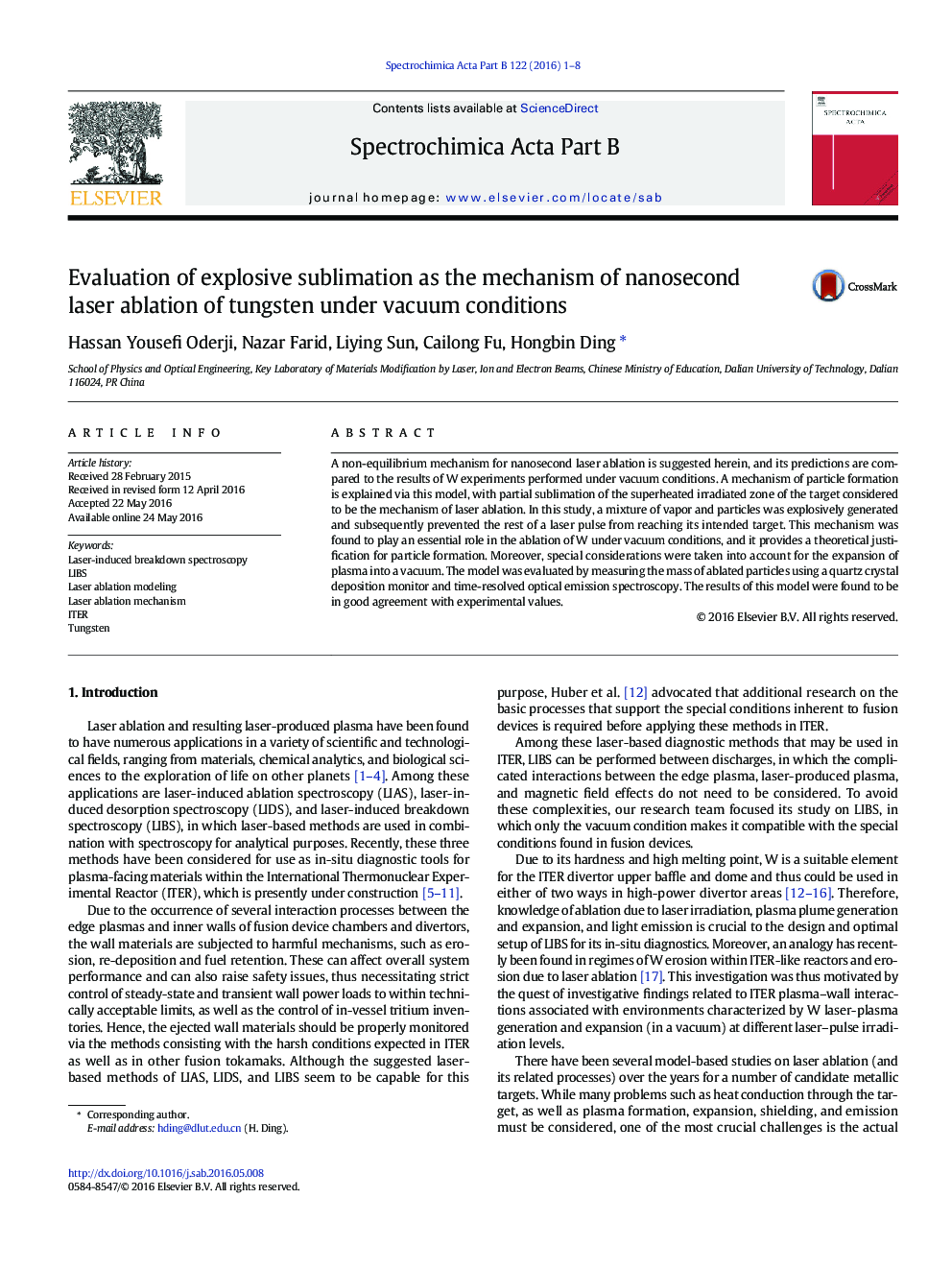| Article ID | Journal | Published Year | Pages | File Type |
|---|---|---|---|---|
| 1239550 | Spectrochimica Acta Part B: Atomic Spectroscopy | 2016 | 8 Pages |
Abstract
A non-equilibrium mechanism for nanosecond laser ablation is suggested herein, and its predictions are compared to the results of W experiments performed under vacuum conditions. A mechanism of particle formation is explained via this model, with partial sublimation of the superheated irradiated zone of the target considered to be the mechanism of laser ablation. In this study, a mixture of vapor and particles was explosively generated and subsequently prevented the rest of a laser pulse from reaching its intended target. This mechanism was found to play an essential role in the ablation of W under vacuum conditions, and it provides a theoretical justification for particle formation. Moreover, special considerations were taken into account for the expansion of plasma into a vacuum. The model was evaluated by measuring the mass of ablated particles using a quartz crystal deposition monitor and time-resolved optical emission spectroscopy. The results of this model were found to be in good agreement with experimental values.
Related Topics
Physical Sciences and Engineering
Chemistry
Analytical Chemistry
Authors
Hassan Yousefi Oderji, Nazar Farid, Liying Sun, Cailong Fu, Hongbin Ding,
